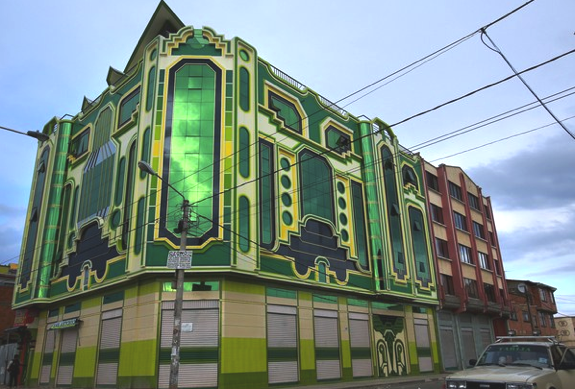
(above) These buildings are locally referred to as a "cholet," for their indigenous architecture. Photo: Getty Images/Noah Friedman-Rudovsky
Architect Freddy Mamani Has Transformed El Alto, Bolivia, Into a Mecca of Modern Architecture
July 25, 2018 - Architectural Digest
Freddy Mamani has established a distinctive New Andean architectural style while inspiring a generation of architects to follow his lead
Text by Eric Allen
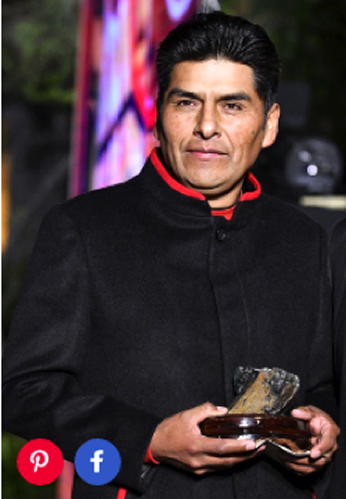 (right) Architect Freddy Mamani, creator of the New Andean architectural style, poses after receiving an award. Photo: Getty Images/Aizar Raldes
(right) Architect Freddy Mamani, creator of the New Andean architectural style, poses after receiving an award. Photo: Getty Images/Aizar Raldes
Many of architect Freddy Mamani Silvestre's buildings in Bolivia feature a similar setup—there's commercial space on the first floor, a ballroom on the second, and apartments above that, and all of it is crowned by the owner's living space. They also happen to be designed with the most vividly colorful façades and interiors that, before Mamani came along, had never before been seen in the world of architecture, let alone in his predominantly brick and adobe hometown of El Alto, Bolivia.
A quick history lesson: Conquered first by the Incan empire and then by the Spanish, the region now known as Bolivia established its independence in 1825. Then 180 years later, in 2005, the country elected its first-ever president of indigenous descent, Evo Morales. That same year, Freddy Mamani designed his first building. Though not a formally trained architect—he was a bricklayer turned civil engineer—Mamani, in his mid-40s, has established the distinctive New Andean architectural style, which is characterized by a design vernacular that both reclaims cultural motifs and sends them hurtling into the future on buildings that have been likened to spaceships.
(below) These neo-futuristic buildings are rooted in deep cultural motifs. Photo: Getty Images/Noah Friedman-Rudovsky
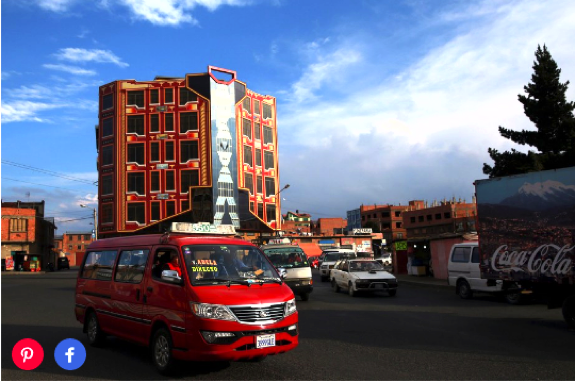
Mamani (and coincidentally, President Morales) is an Aymara, one of the nations of people native to the Andes and Altiplano regions of South America. His inspirations include Aymaran aguayos, a traditional textile whose bright colors and animal motifs have perhaps the clearest influence on his designs, as well as the chakana, or Andean cross, Incan ruins, ceramics, and sci-fi movies. He's designed dozens of buildings for the wealthiest inhabitants of El Alto (population of roughly one million), usually featuring an exterior that displays a strong geometric statement, and an interior that doubles down on what the outside introduced. Inside you'll find dizzying shapes formed with plaster and rendered in Technicolor with oil paints, adorned with LED lights and chandeliers, and visually multiplied with mirrors. What's even more head-spinning is that Mamani doesn't design his structures on a computer, preferring to either sketch on a wall or simply verbally explain ideas to his employees.
(below) Many architects in the region have begun to mimic Mamani's style. Photo: Getty Images/Aizar Raldes
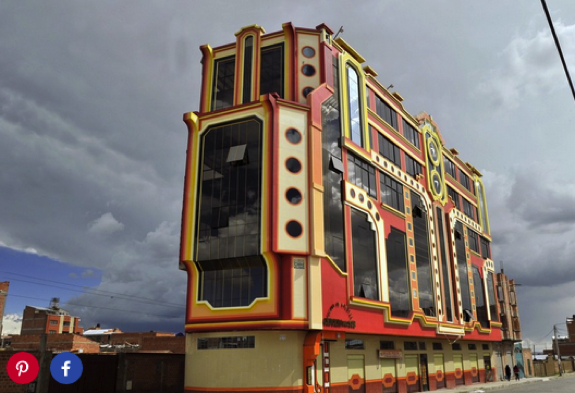
His buildings are so distinctive that they've got their own nickname: "cholets," a portmanteau of the ethnic slur "cholo" and the Alpine architectural style "chalet." That name also happens to be the title of a documentary about his work that debuted at the Architecture Film Festival Rotterdam last year. And if a film isn't evidence enough of Mamani's cultural impact, there are multiple photo essays and monographs, not to mention the work of other architects like Santos Churata, who designs buildings in El Alto in Mamani's style, but with explicit references to the Transformers movies, like a façade with a robot's face.
(below) By mixing various colors and adding many different lighting fixtures, the interior of the buildings can be just as bold and striking as the exterior. Photo: Getty Images/Aizar Raldes
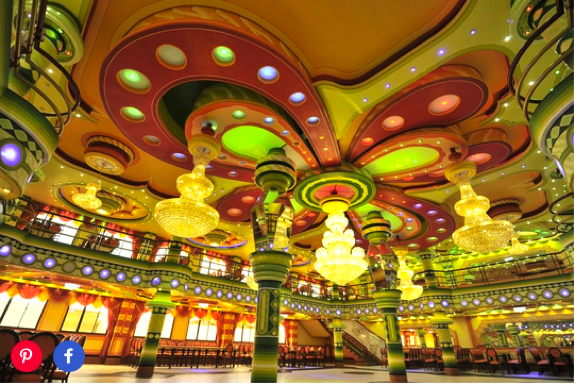
El Alto, in addition to being one of the highest cities in the world, overlooks the administrative capital of Bolivia, La Paz. It's there that Morales worked to pass a new constitution in 2009 that legally affirmed the rights of the country's indigenous cultures. Changes like that have helped transform Bolivia's economy, sharply increasing the GDP and creating a burgeoning middle class with the money to—proudly—commission one of Mamani's designs.